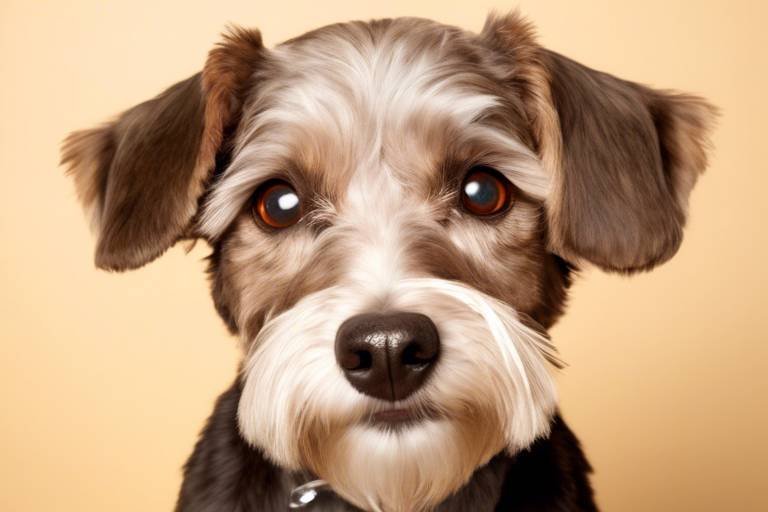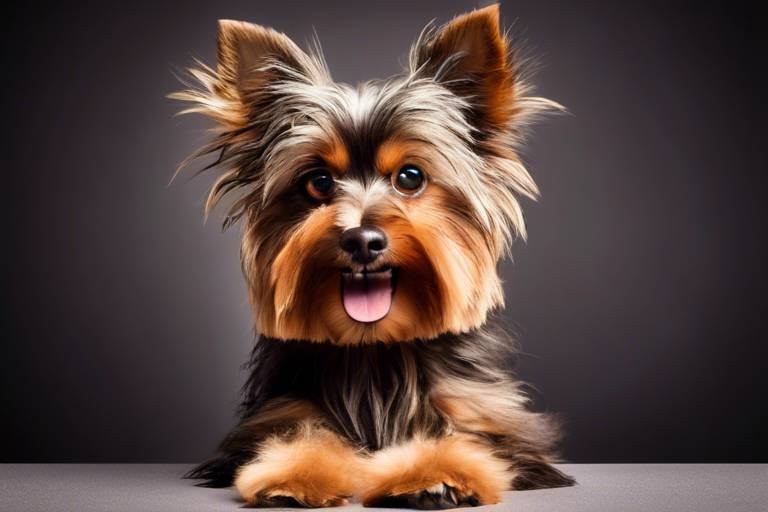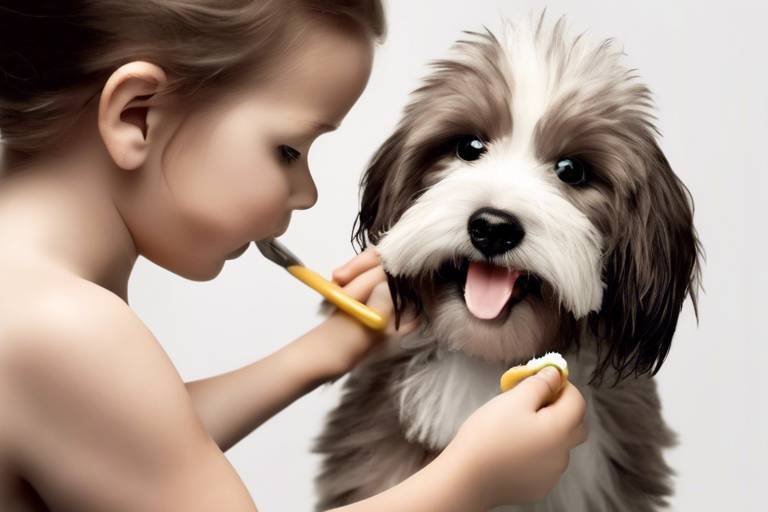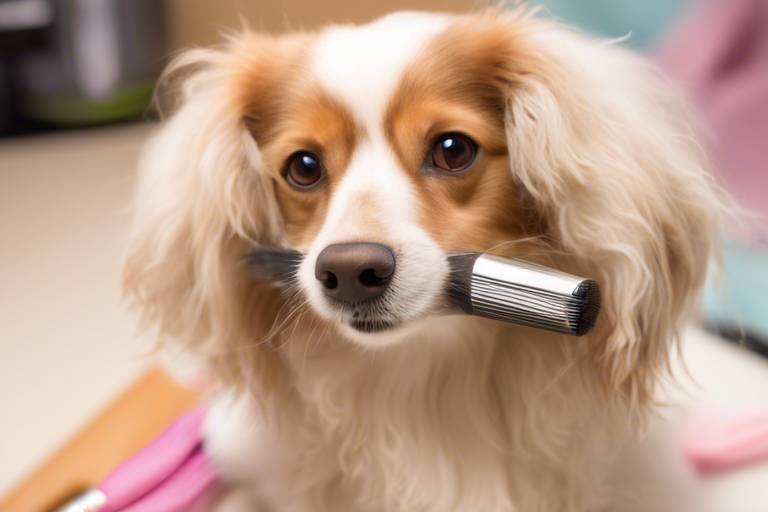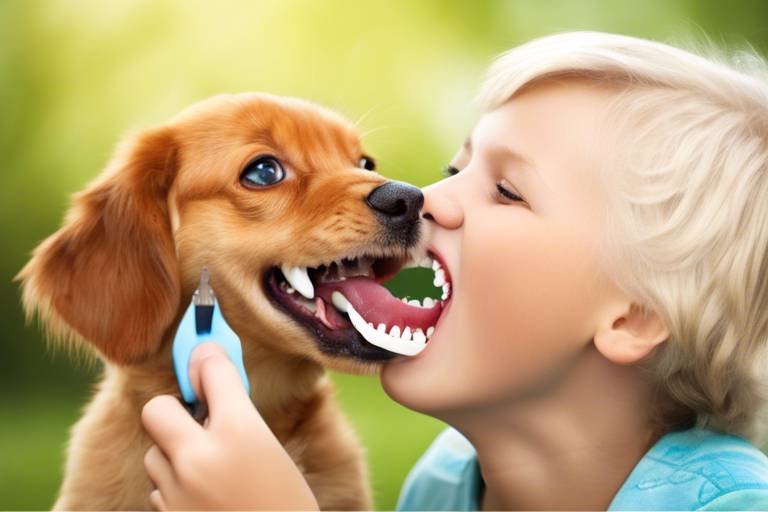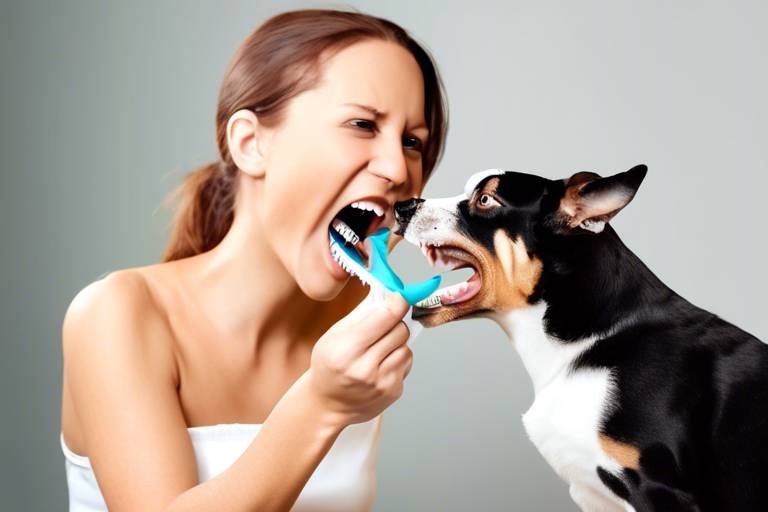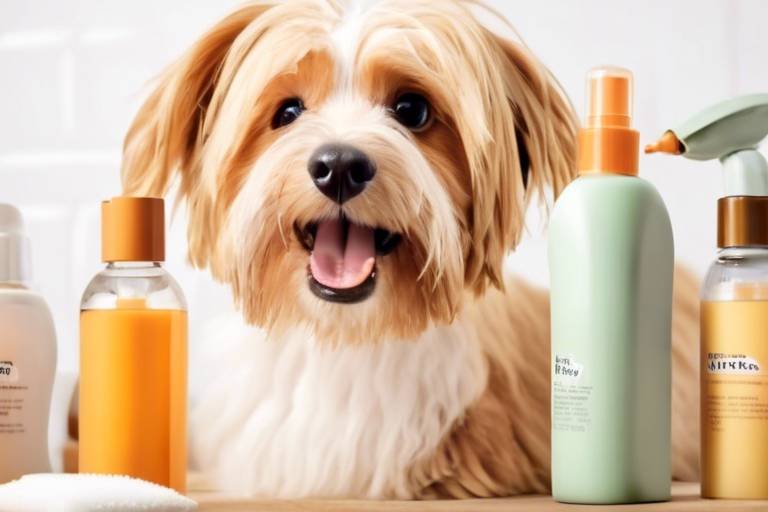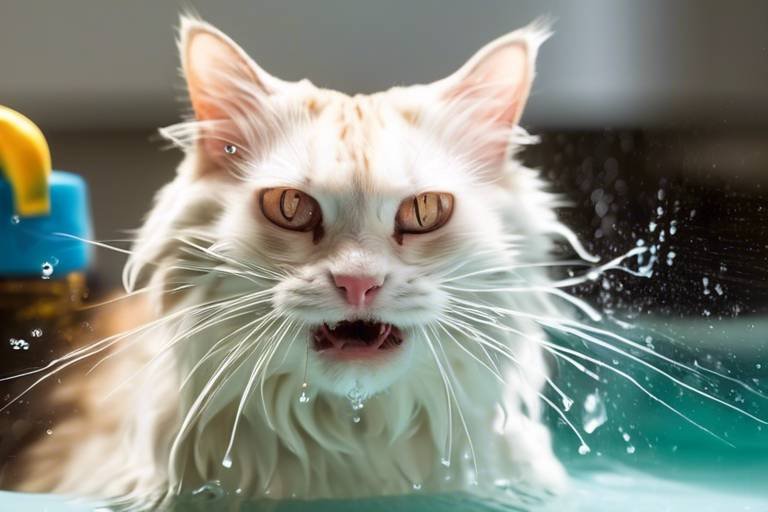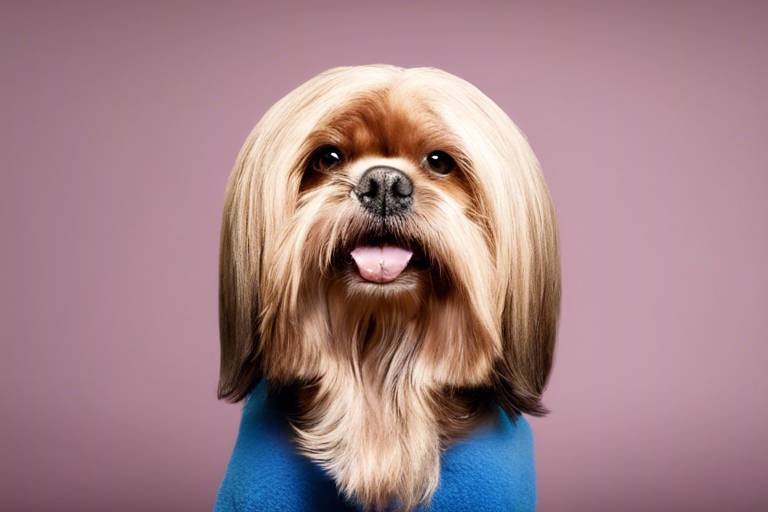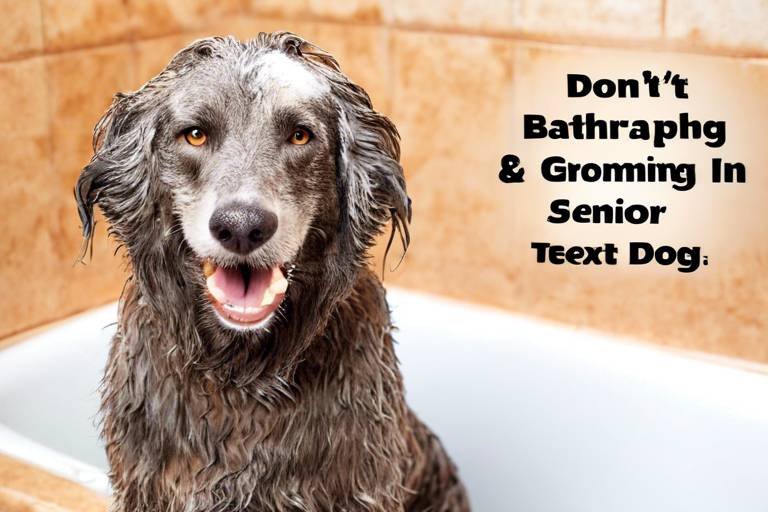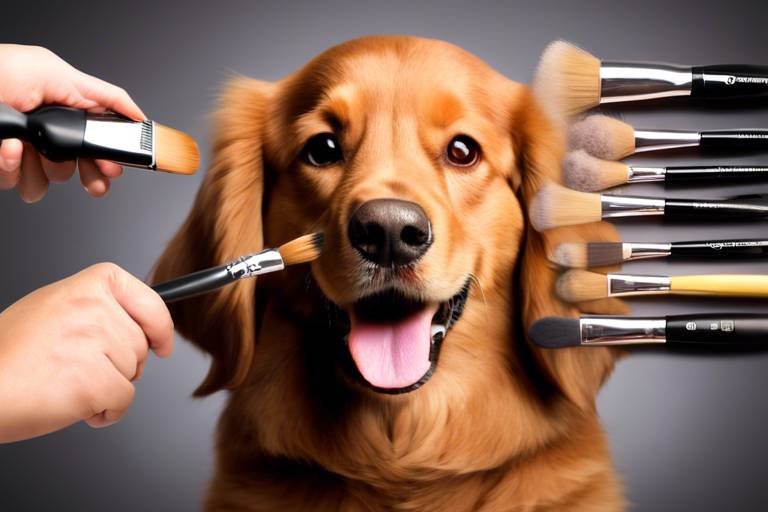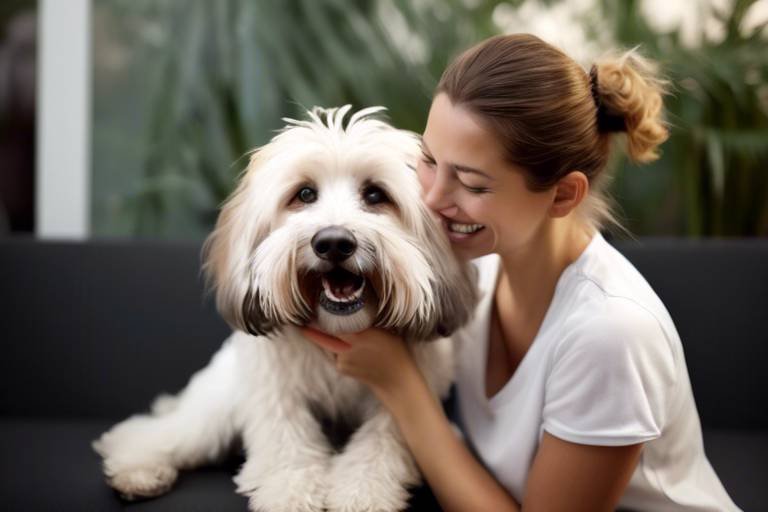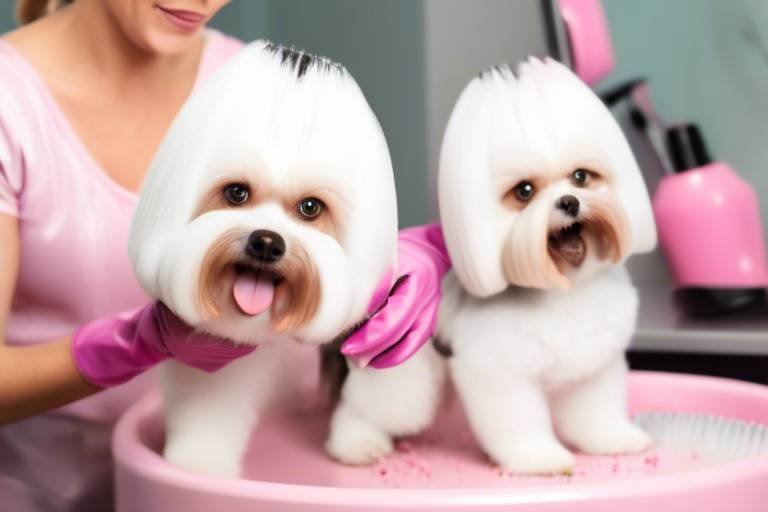The Best Practices for Grooming Short-Haired Dogs
Grooming your short-haired dog isn’t just about keeping them looking fabulous; it’s a vital part of their overall health and happiness. Just like us, dogs need a little TLC to keep their coats shiny and their skin healthy. So, if you’re a proud parent to a short-haired breed, you might be wondering, “What are the best practices for grooming my furry friend?” Well, you’re in the right place! In this article, we’ll dive deep into the essential grooming techniques that will not only enhance your dog’s appearance but also contribute to their well-being.
First off, let’s understand what we mean by "short-haired dogs." Breeds like Beagles, Boxers, and Dachshunds have coats that are typically less than two inches long. While they may not require the extensive grooming routines of their long-haired counterparts, they still need regular maintenance to keep their skin healthy and their coats looking vibrant. Think of it as a quick tune-up versus a full engine overhaul—both are important, but the approach differs!
Now, let’s break down the grooming process into manageable steps. Each step is crucial in ensuring that your dog's grooming routine is effective and enjoyable. From choosing the right tools to mastering bathing techniques, we’ll cover everything you need to know. So grab your grooming kit, and let’s get started on this exciting journey of keeping your short-haired dog in tip-top shape!
Different breeds of short-haired dogs have unique grooming needs. Recognizing these differences is crucial for tailoring grooming practices that cater to their specific coat types and skin sensitivities. For instance, a Bulldog’s skin folds require special attention, while a Greyhound’s smooth coat may need less frequent brushing. Understanding your dog's breed can help you choose the right grooming techniques and products.
Having the right tools is vital for effective grooming. This section discusses the essential grooming tools every short-haired dog owner should have to maintain their pet's coat and skin health. Here’s a quick list of must-have grooming tools:
- Rubber Brush: Great for removing loose hair and dirt.
- Hound Glove: Perfect for a gentle massage and shedding.
- Shampoo: Use a dog-friendly formula for bathing.
- Nail Clippers: Essential for keeping those nails trimmed.
Bathing short-haired dogs requires specific techniques to ensure thorough cleaning without damaging their skin. Start by wetting your dog’s coat thoroughly with lukewarm water. Use a mild, dog-specific shampoo and lather it well, paying special attention to areas prone to dirt, like the belly and paws. Rinse thoroughly to avoid any residue that could irritate their skin. After the bath, towel dry your dog and avoid using a hairdryer, as it can be too hot and uncomfortable for them.
Regular brushing and de-shedding can significantly reduce shedding and maintain coat health. For short-haired breeds, brushing once a week is usually sufficient. Use a rubber brush or a hound glove to gently brush your dog’s coat, which helps distribute natural oils and keeps their skin healthy. Remember, brushing is not just about removing loose hair; it’s also a bonding experience that your dog will appreciate!
Short-haired dogs can be prone to skin issues. It’s essential to monitor their skin for any signs of irritation, redness, or excessive scratching. Regular baths and brushing can help prevent many skin problems, but if you notice anything unusual, consult your veterinarian. Additionally, consider using a moisturizing spray or lotion designed for dogs to keep their skin hydrated, especially during dry seasons.
Proper ear and eye care is essential for short-haired dogs. Make it a habit to check their ears weekly for dirt or wax buildup. Use a vet-recommended ear cleaner and cotton balls to gently clean the outer ear. For their eyes, look out for any discharge or redness. If you see anything concerning, don’t hesitate to reach out to your vet. Keeping these areas clean will help prevent infections and other health issues.
Nail trimming is often overlooked in grooming routines. However, it’s crucial for your dog’s comfort and health. Aim to trim your dog’s nails every 3-4 weeks. Use a quality pair of dog nail clippers and take your time. If you’re unsure, it’s better to trim a little at a time rather than risk cutting too deep and causing pain. Reward your dog with treats and praise to make the experience positive!
While home grooming is important, sometimes professional services are beneficial. If your dog has a particularly thick coat or if you’re unsure about certain grooming tasks, don’t hesitate to seek help from a professional groomer. They have the experience and tools to ensure your dog looks and feels their best. Plus, it can be a fun outing for your pup!
Q: How often should I groom my short-haired dog?
A: Generally, once a week is sufficient for brushing. However, during shedding seasons, you may need to brush more frequently.
Q: Can I use human shampoo on my dog?
A: No, human shampoo can irritate a dog’s skin. Always use a shampoo specifically formulated for dogs.
Q: What should I do if my dog resists grooming?
A: Start slowly and make it a positive experience with treats and praise. Gradually introduce grooming tools and techniques.
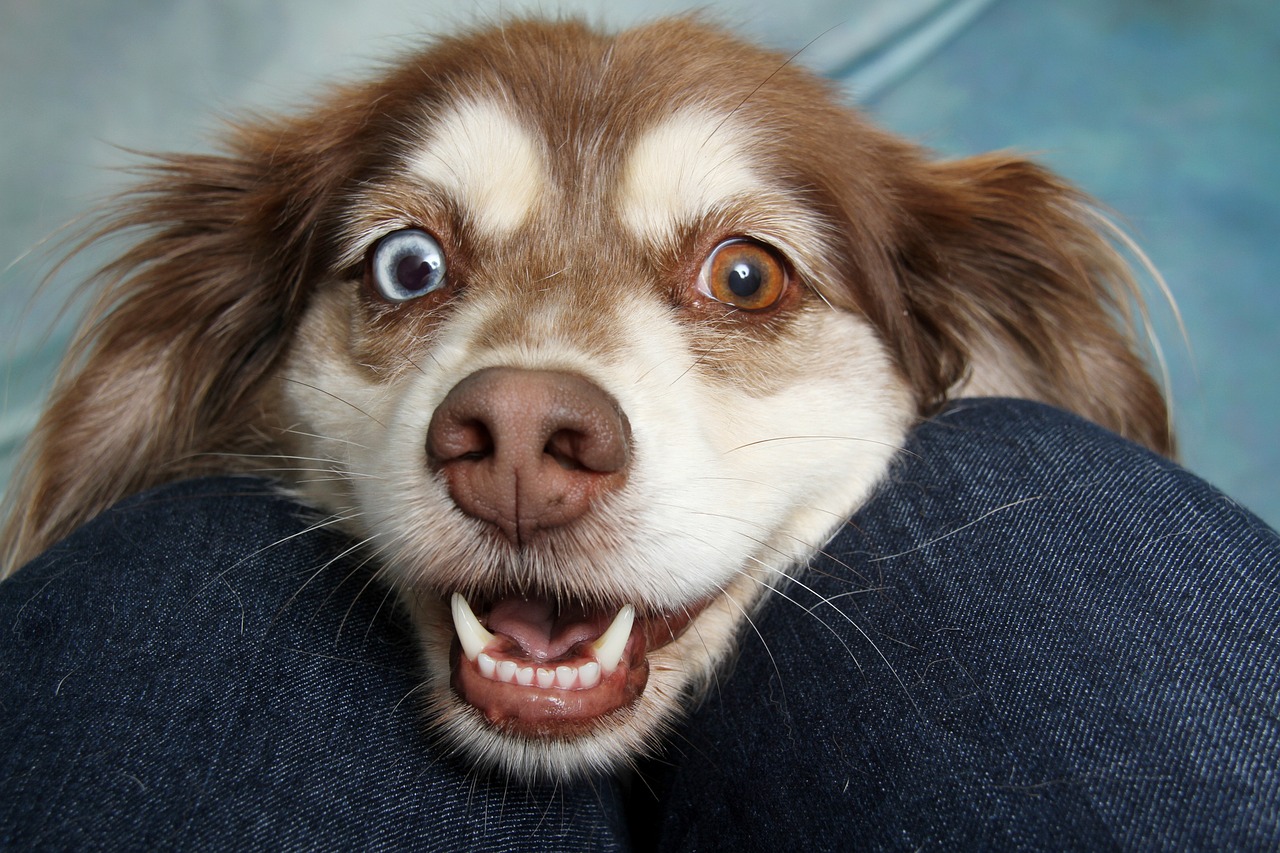
Understanding Short-Haired Dog Breeds
When it comes to grooming short-haired dogs, understanding the specific needs of different breeds is crucial. Each breed has its own unique characteristics, which can significantly influence grooming practices. For instance, while some short-haired breeds like the Beagle have a dense, weather-resistant coat, others like the Dachshund may have a smoother, softer texture. This diversity means that a one-size-fits-all approach to grooming simply won’t do.
Short-haired breeds are often celebrated for their low-maintenance grooming needs, but this doesn't mean they are exempt from care. In fact, many of these dogs have specific grooming requirements that, if ignored, can lead to skin irritations or other health issues. For example, breeds like the Boxer and Bulldog are prone to skin sensitivities, making it essential to choose the right grooming products. Understanding your dog's breed can help you tailor your grooming routine effectively.
Some short-haired dog breeds include:
- Beagle - Known for their friendly nature and short, dense coat.
- Dachshund - Features a smooth coat that requires regular brushing.
- Boxer - Active and playful, with a short coat that needs minimal grooming.
- Bulldog - Their loose skin and short hair can lead to skin fold issues.
- Chihuahua - Small in size, but still requires attention to their skin and coat.
Additionally, it’s important to consider the individual dog's lifestyle and environment. Dogs that spend a lot of time outdoors may need more frequent grooming to remove dirt and debris from their coats. On the other hand, those that are primarily indoor pets might require less frequent grooming. Understanding these nuances allows you to create a grooming schedule that fits your dog's needs perfectly.
Moreover, short-haired dogs can have varying skin sensitivities. For instance, some breeds may be more susceptible to allergies or irritations due to environmental factors. Keeping an eye out for signs of discomfort, such as excessive scratching or redness, can help you address any issues before they escalate. Regular vet check-ups can also provide insights into your dog's specific grooming needs based on their breed and skin type.
In summary, recognizing the unique grooming needs of short-haired dog breeds is essential for maintaining their health and happiness. By understanding their specific coat types, skin sensitivities, and lifestyle requirements, you can ensure that your furry friend looks and feels their best. So the next time you grab that brush or shampoo, remember that a little knowledge goes a long way in keeping your short-haired dog thriving!
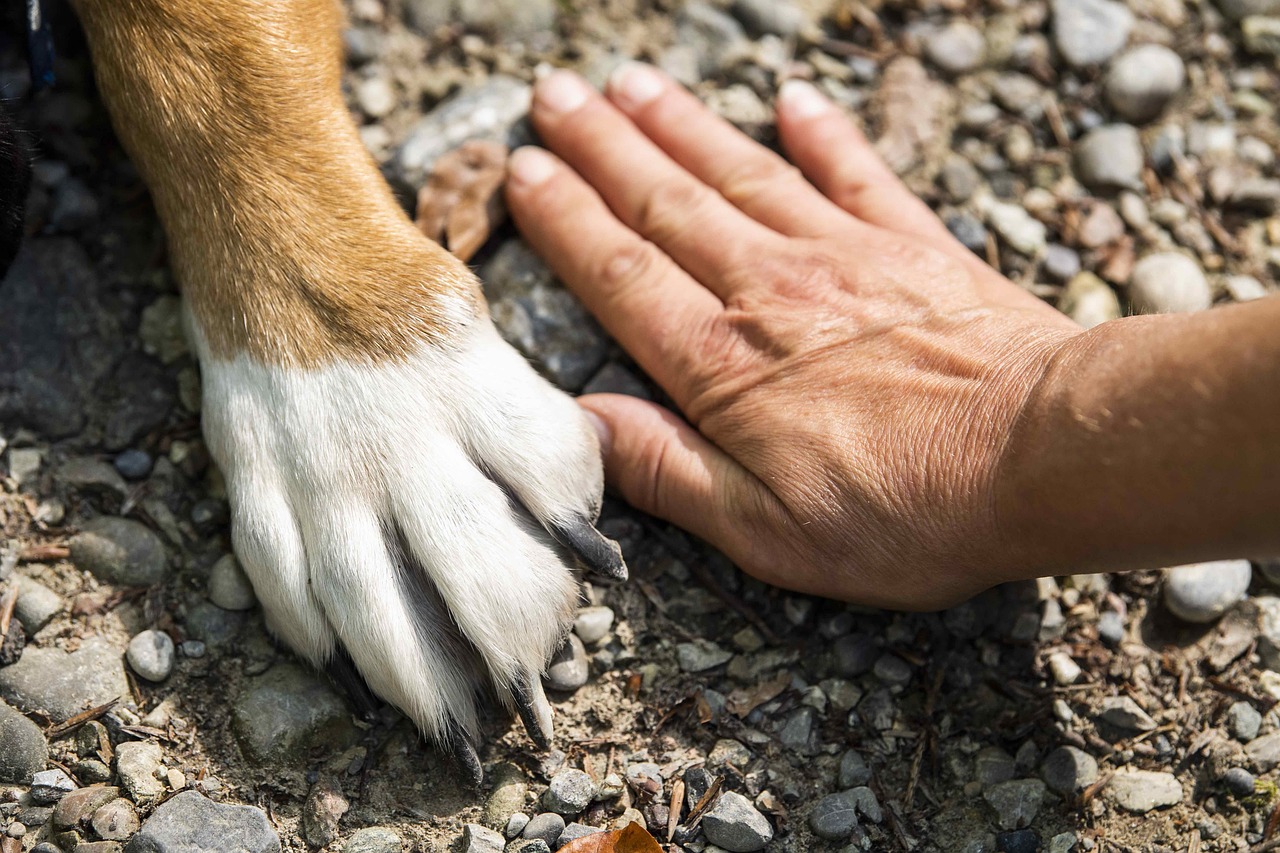
Essential Grooming Tools
When it comes to grooming short-haired dogs, having the right tools is absolutely crucial. Just like a painter needs the right brushes to create a masterpiece, dog owners need their grooming arsenal to keep their furry friends looking and feeling their best. So, what are these essential tools that every short-haired dog owner should have? Let’s dive in!
First and foremost, a good quality bristle brush is a must-have. This tool is perfect for removing loose hair and dirt from your dog’s coat. It’s gentle enough to use on their skin without causing irritation, which is especially important for breeds that may have sensitive skin. Think of it as a gentle massage that not only keeps their coat shiny but also promotes blood circulation.
Next up is the rubber grooming mitt. This tool is fantastic for dogs that might be a little skittish about traditional brushes. The rubber bristles help to remove loose fur while also providing a soothing sensation that many dogs love. It’s like giving your dog a spa day right in your living room! Simply slip it on your hand and give your pup a good rub-down, and watch the fur fly!
Another essential tool is a de-shedding tool. Short-haired dogs can still shed quite a bit, and a de-shedding tool helps to target that undercoat that regular brushes might miss. Using this tool regularly can significantly reduce the amount of fur on your floors and furniture. It’s like having a mini vacuum cleaner specifically designed for your dog’s coat!
Don’t forget about a high-quality dog shampoo. Bathing your short-haired dog with the right shampoo not only cleans their coat but also helps maintain their skin's health. Look for shampoos that are free from harsh chemicals and are specifically formulated for dogs. This is important because, just like humans, dogs can suffer from dry skin and allergies if exposed to the wrong products.
Finally, a nail clipper is essential for your dog’s overall grooming routine. Keeping your dog's nails trimmed is crucial for their comfort and health. Long nails can cause pain and lead to other issues, such as joint problems. If you’re unsure about how to trim nails, consider investing in a clipper designed for pets, which often comes with safety features to prevent over-trimming.
Here’s a quick overview of the essential grooming tools you should consider for your short-haired dog:
| Tool | Purpose |
|---|---|
| Bristle Brush | Removes loose hair and dirt; promotes blood circulation |
| Rubber Grooming Mitt | Gentle fur removal; provides a soothing massage |
| De-shedding Tool | Targets undercoat to reduce shedding |
| Dog Shampoo | Cleans coat and maintains skin health |
| Nail Clipper | Keeps nails trimmed for comfort and health |
With these tools in your grooming kit, you’ll be well-equipped to keep your short-haired dog looking fabulous and feeling great. Remember, grooming isn’t just about aesthetics; it’s about ensuring your pet’s overall well-being. So grab those tools and get ready to pamper your pup!
Q1: How often should I groom my short-haired dog?
A: It’s recommended to brush your short-haired dog at least once a week to keep their coat healthy and reduce shedding.
Q2: Can I use human shampoo on my dog?
A: No, human shampoo can disrupt the pH balance of your dog’s skin. Always use a shampoo specifically formulated for dogs.
Q3: What if my dog hates being groomed?
A: Start slowly and make grooming a positive experience. Use treats and praise to help your dog associate grooming with something enjoyable.

Bathing Techniques
Bathing your short-haired dog might seem like a straightforward task, but there’s a bit more to it than just splashing some water and soap. The goal is to ensure your furry friend is not only clean but also comfortable throughout the process. First and foremost, it’s essential to choose the right dog shampoo. Opt for a gentle, hypoallergenic formula that’s specifically designed for dogs. Human shampoos can disrupt the natural oils in their skin, leading to dryness and irritation. So, think of it like choosing the right shampoo for your hair; you wouldn’t want to use something that doesn’t suit your hair type!
Before you even think about getting your pup wet, prepare your bathing area. Make sure you have everything you need within arm's reach—shampoo, towels, a brush, and possibly a non-slip mat to prevent any slipping accidents. Dogs can be a bit wiggly during bath time, and a secure footing can help keep them calm. If you're using a bathtub or a shower, consider placing a towel or mat at the bottom to provide traction.
When it’s time to bathe your dog, start by wetting their coat thoroughly. Use warm water, as cold water can be uncomfortable and hot water can irritate their skin. A handheld showerhead or a cup can be useful for this task. Be sure to avoid their eyes and ears to prevent any discomfort. Once your dog is wet, apply the shampoo, lathering it gently into their coat. Think of it like giving your dog a massage; this not only helps distribute the shampoo but also makes the experience more enjoyable for them.
After lathering, rinse thoroughly. It’s crucial to ensure that no shampoo residue remains, as leftover soap can lead to skin irritation. A good rule of thumb is to rinse until the water runs clear. Once rinsed, you can use a dog conditioner if your dog has a particularly sensitive or dry coat. This step can help in moisturizing their skin and making their coat even shinier.
Now, drying your dog is just as important as bathing them. You can use a towel to gently pat them dry, but be cautious not to rub too hard, as this can irritate their skin. If your dog tolerates it, a blow dryer on a low, cool setting can help speed up the drying process. Just remember to keep it at a safe distance to avoid burns. If your dog is particularly anxious about the dryer, stick to towels and let them air dry in a warm, safe space.
Lastly, consider the frequency of baths. Short-haired dogs generally require fewer baths than their long-haired counterparts. A good rule of thumb is to bathe them every 4 to 6 weeks, depending on their activity level and how dirty they get. Overbathing can strip their coat of natural oils, leading to dry skin. So, always assess your dog’s needs and adjust accordingly!
In summary, bathing your short-haired dog is more than just a chore; it’s an opportunity to bond and ensure their coat and skin remain healthy. By using the right products, following proper techniques, and making the experience enjoyable, you’ll have a happy, clean pup ready to take on the world!
- How often should I bathe my short-haired dog? - Generally, every 4 to 6 weeks, but it depends on their activity level.
- Can I use human shampoo on my dog? - No, it’s best to use a shampoo specifically designed for dogs to avoid skin irritation.
- What if my dog hates baths? - Try to make bath time a positive experience with treats and praise, and consider using a calming product if necessary.
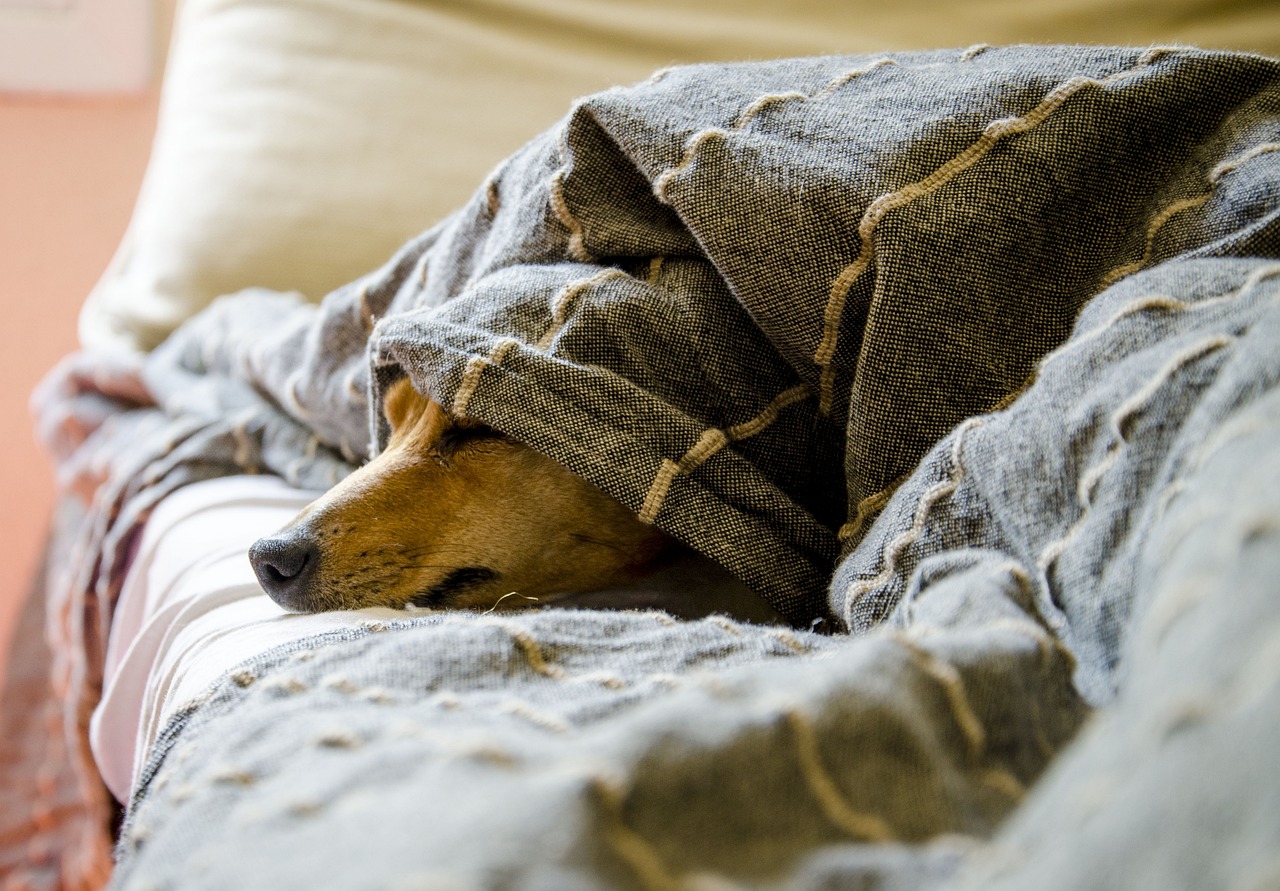
Brushing and De-shedding
When it comes to grooming short-haired dogs, play a pivotal role in maintaining a healthy coat and reducing shedding around the house. You might think that because these dogs have shorter fur, they require less attention, but that couldn't be further from the truth! In fact, regular brushing not only keeps their coat looking shiny and vibrant but also promotes better skin health by distributing natural oils. So, how often should you brush your furry friend? Generally, a good rule of thumb is to brush them at least once a week, but more frequent brushing can be beneficial, especially during shedding seasons.
Now, let’s dive into the best methods for brushing and de-shedding your short-haired companion. First off, you’ll want to choose the right tools. A rubber grooming mitt or a bristle brush can work wonders for short-haired breeds. These tools are excellent for removing loose hair and dirt without irritating their skin. As you brush, make sure to go against the grain of the fur initially to lift any dead hair, and then brush in the direction of hair growth to smooth everything down.
But what about de-shedding? This is where things get a bit more specialized. De-shedding tools, like a de-shedding rake or a grooming tool specifically designed for short-haired dogs, can help remove undercoat fur that regular brushing might miss. This is particularly important for breeds that tend to shed more than others. For example, breeds like the Beagle or Boxer can benefit greatly from a good de-shedding session. Aim to spend about 10-15 minutes during each grooming session focusing on these techniques.
Moreover, it’s essential to pay attention to your dog's reactions during brushing. If they seem uncomfortable, it might be a sign to switch tools or techniques. Always approach grooming as a bonding experience; offer them treats and praise to create a positive association. Remember, grooming shouldn’t feel like a chore for either of you!
Lastly, let’s not forget about the benefits of regular brushing. Not only does it help in keeping your home free from excessive dog hair, but it also allows you to check for any skin issues or parasites. Regular grooming sessions can help you notice changes in your dog’s skin or coat texture, which could indicate underlying health issues. So, embrace the brush and make it a fun routine for both you and your short-haired dog!
- How often should I brush my short-haired dog? It's recommended to brush at least once a week, but more often during shedding seasons.
- What tools are best for brushing? A rubber grooming mitt or a bristle brush is ideal for short-haired dogs, while de-shedding tools can help with undercoat removal.
- Can brushing help with skin issues? Yes, regular brushing helps distribute natural oils and can reveal skin problems early on.
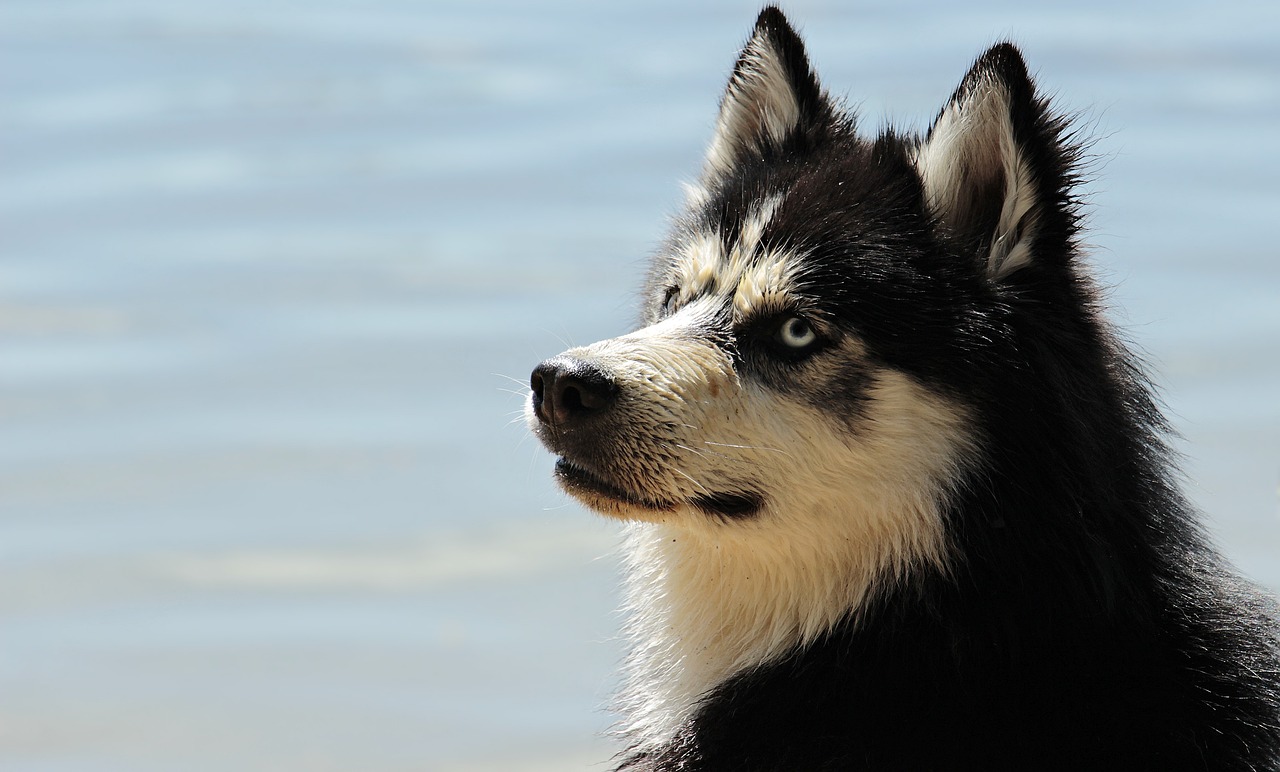
Skin Care and Treatment
When it comes to short-haired dogs, their skin care is just as important as their coat. Many owners might think that a short coat means less grooming, but in reality, these dogs can be prone to various skin issues. Understanding the unique needs of their skin is essential for keeping them healthy and happy. Just like us, dogs can suffer from dryness, irritation, and even allergies, which can lead to discomfort and more serious health problems if left unchecked.
One of the first steps in effective skin care is to regularly check your dog for any signs of skin problems. Look for redness, itchiness, or any unusual bumps or lumps. If you notice your dog scratching more than usual or if their skin appears flaky, it might be time to take action. Short-haired breeds often have skin that’s more exposed, which can lead to sunburn or other environmental irritations. To combat this, consider using a dog-safe sunscreen when taking your furry friend out on sunny days, especially if they have lighter skin or fur.
Another critical aspect of skin care is hydration. Just like our skin, your dog's skin needs moisture to stay healthy. Ensure your dog is drinking enough water, as proper hydration can help prevent dry skin. Additionally, you might want to incorporate omega fatty acids into their diet, which can significantly improve skin health and coat quality. These can be found in fish oil supplements or high-quality dog foods that list fish as an ingredient.
Bathing your short-haired dog is also a significant part of their skin care routine. However, it’s essential to use a gentle, hypoallergenic shampoo specifically designed for dogs. Human shampoos can strip the natural oils from their skin, leading to dryness and irritation. Aim to bathe your dog every 4 to 6 weeks, or as needed, depending on their activity level and skin condition. After bathing, make sure to thoroughly rinse the shampoo out to prevent any residue that could irritate their skin.
In addition to regular bathing, consider incorporating a moisturizing spray or conditioner designed for dogs after their bath. This can help lock in moisture and keep their skin supple. If your dog has specific skin conditions, such as allergies or dermatitis, consult your veterinarian for tailored treatments that may include medicated shampoos or topical ointments.
Finally, it's vital to keep an eye on your dog’s environment. Allergens like pollen, dust mites, and even certain fabrics can trigger skin reactions. Regular cleaning of your dog’s bedding and living area can help minimize exposure to these irritants. Also, consider using air purifiers in your home to reduce airborne allergens that could affect your dog’s skin health.
In summary, maintaining the skin health of your short-haired dog involves a combination of regular checks, proper hydration, gentle bathing, and environmental care. By being proactive and attentive to your dog's skin needs, you can ensure they remain comfortable, healthy, and happy.
- How often should I bathe my short-haired dog? - Typically, every 4 to 6 weeks is sufficient, but it depends on their activity level.
- What should I do if my dog has dry skin? - Consider switching to a moisturizing shampoo and adding omega fatty acids to their diet.
- Can I use human shampoo on my dog? - No, human shampoo can strip their skin of natural oils. Always use dog-specific products.
- How can I tell if my dog has allergies? - Look for signs like itching, redness, or unusual bumps. Consult your vet for a proper diagnosis.
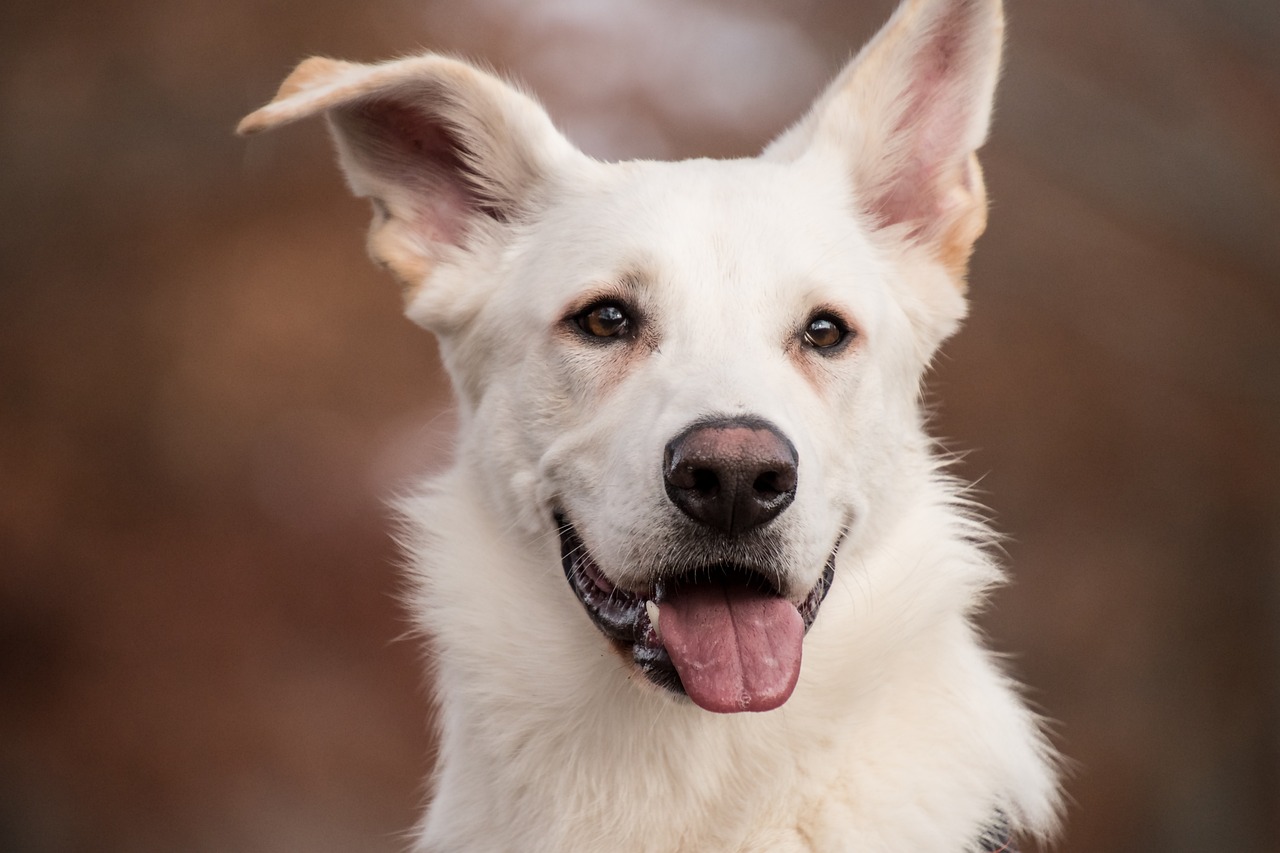
Ear and Eye Care
When it comes to grooming short-haired dogs, are often overlooked, but they are just as important as brushing and bathing. Think of your dog's ears and eyes as the windows to their health; keeping them clean and healthy can prevent a host of issues down the line. Just like humans, dogs can suffer from infections and irritations, especially in their ears, which can lead to discomfort and even more serious health problems. So, how do you ensure your furry friend’s ears and eyes are in tip-top shape? Let's dive into some best practices!
First, let's talk about the ears. Short-haired dogs often have less fur around their ears, which can lead to more exposure to dirt, moisture, and wax buildup. To keep your dog's ears clean, you should regularly check them for any signs of irritation or infection. If you notice a foul smell, redness, or excessive wax, it could be a sign of an infection, and a trip to the vet may be necessary. For routine cleaning, use a vet-recommended ear cleaner and some cotton balls. Simply soak the cotton in the cleaner, gently wipe the outer ear, and allow your dog to shake its head. This simple act can help remove debris and excess wax.
Now, onto eye care! Short-haired dogs are generally less prone to eye problems than their long-haired counterparts, but that doesn't mean they are completely immune. Regularly check your dog's eyes for any signs of redness, discharge, or excessive tearing. If you notice any of these symptoms, it might be time to consult your vet. To clean your dog’s eyes, you can use a soft, damp cloth to wipe away any discharge gently. Always wipe from the corner of the eye outward to avoid pushing debris into the eye itself.
Here’s a quick checklist for ear and eye care:
- Ear Care: Check ears weekly for dirt and wax buildup.
- Use a vet-approved cleaner for routine cleaning.
- Watch for signs of infection: foul smell, redness, or excessive wax.
- Eye Care: Inspect eyes regularly for redness or discharge.
- Wipe away discharge with a damp cloth, moving from the inside corner outward.
- Consult your vet if you notice persistent issues.
By incorporating these simple practices into your grooming routine, you can help prevent potential health issues and ensure your short-haired dog remains happy and healthy. Remember, a little attention goes a long way in maintaining your dog’s overall well-being!
Q: How often should I clean my dog's ears?
A: It’s generally recommended to check and clean your dog's ears at least once a month. However, if your dog is prone to ear infections, you may need to clean them more frequently.
Q: What should I do if I notice discharge in my dog's eyes?
A: If the discharge is persistent or accompanied by redness, it’s best to consult your veterinarian to rule out any underlying issues.
Q: Can I use regular cotton swabs to clean my dog's ears?
A: It’s not advisable to use cotton swabs inside your dog's ears, as they can push wax further in or injure the ear canal. Stick to cotton balls and only clean the outer ear.
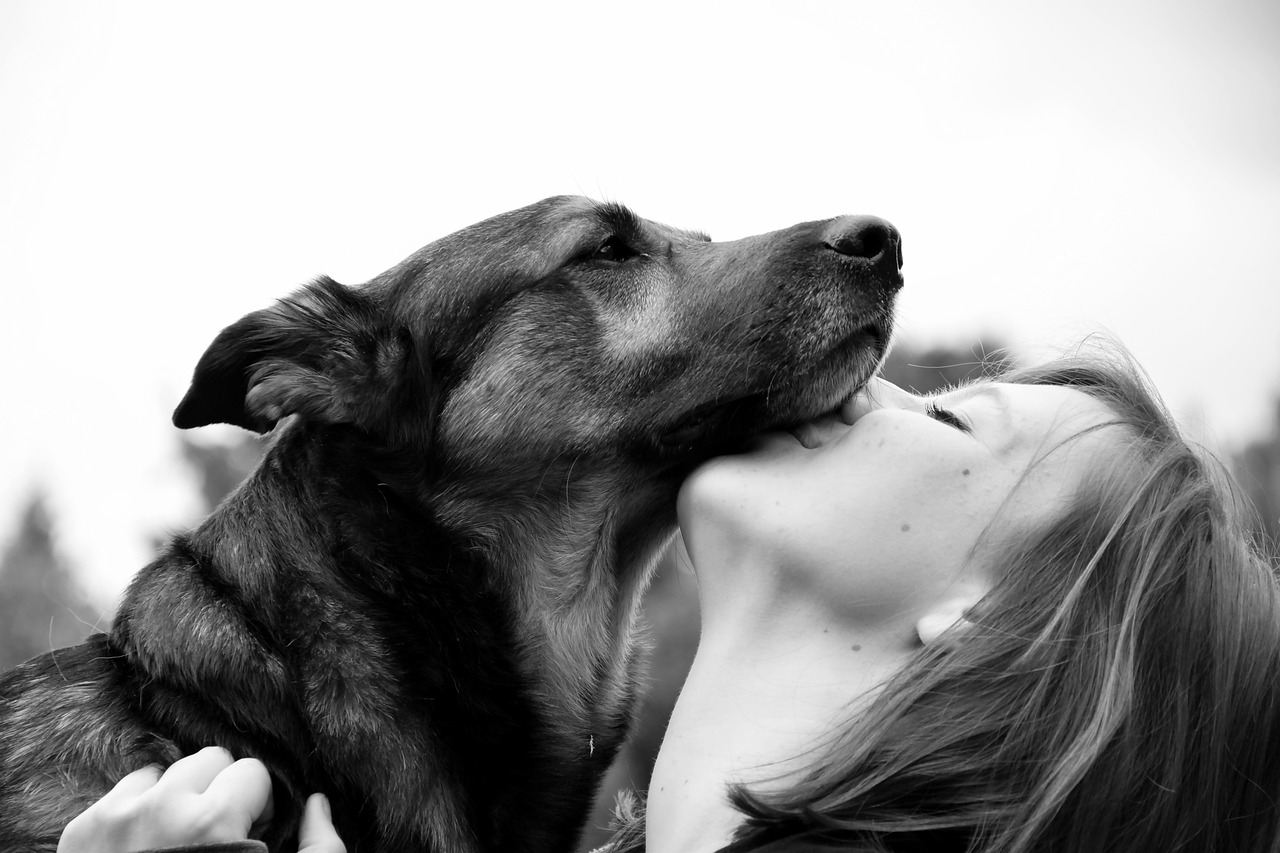
Nail Trimming Tips
Nail trimming is often one of those tasks that many dog owners dread, but it’s essential for your short-haired dog’s health and comfort. Just like we need regular haircuts, our furry friends require nail maintenance to prevent discomfort and health issues. Imagine walking around with long, uncomfortable nails; it’s not a pleasant thought, right? So, let’s dive into some effective nail trimming tips that will make the process smoother for both you and your pup.
First off, it’s important to choose the right tools. A good pair of dog nail clippers or a nail grinder can make all the difference. If you’re not sure which one to use, consider your dog's temperament. Clippers are great for quick trims, while a nail grinder can help you achieve a smoother finish and reduce the risk of splitting the nail. Whichever tool you choose, make sure it’s sharp and designed specifically for dogs. Dull tools can cause pain and lead to a negative experience for your pet.
Before you even think about trimming, create a calm environment. Dogs can sense your anxiety, so take a few deep breaths and approach the task with a relaxed demeanor. You might want to have some treats on hand to reward your dog for their cooperation. Start by gently holding your dog’s paw and letting them get used to the feel of your hands. This is crucial, especially if your dog is not accustomed to having their nails trimmed.
When it comes to actually trimming the nails, remember to only cut the tip of the nail. If your dog has light-colored nails, you’ll see the pink area called the quick, which is where the blood vessels and nerves are located. Avoid cutting into this area, as it can be painful and lead to bleeding. For dogs with dark nails, it can be a bit trickier, so it’s best to take off small amounts at a time until you see a darker spot indicating the quick's location. If you’re ever unsure, it’s better to err on the side of caution.
Here’s a quick tip: if your dog’s nails are particularly long, it’s wise to trim them gradually over several sessions. This not only helps your dog get used to the process but also minimizes the risk of cutting into the quick. You can also use a file or grinder to smooth out any rough edges after trimming. Just remember, patience is key. If your dog becomes anxious or agitated, take a break and try again later. It’s all about making the experience as positive as possible!
After you’ve successfully trimmed your dog’s nails, don’t forget to reward them with praise or a treat. This reinforces good behavior and helps your dog associate nail trimming with something enjoyable. Over time, your dog will become more comfortable with the process, making it easier for both of you.
In case you prefer to leave it to the professionals, there’s no shame in that! Many groomers offer nail trimming services, and they have the experience and tools to get the job done quickly and safely. Just keep in mind that regular maintenance at home can save you money and help keep your dog’s nails in check between visits.
In summary, nail trimming is an essential part of grooming your short-haired dog. With the right tools, a calm approach, and plenty of patience, you can ensure that your furry friend stays comfortable and healthy. So, roll up your sleeves, grab those clippers, and get ready to pamper your pup!
- How often should I trim my dog's nails? It generally depends on your dog's activity level, but most dogs need a trim every 3-4 weeks.
- What if my dog won’t let me trim their nails? Gradually get them used to having their paws handled and consider seeking professional help if needed.
- Can I use human nail clippers on my dog? It’s best to use clippers designed for dogs, as they are specifically made to handle the thickness of canine nails.
- What should I do if I accidentally cut the quick? Apply a styptic powder to stop the bleeding, and if it continues, consult your veterinarian.
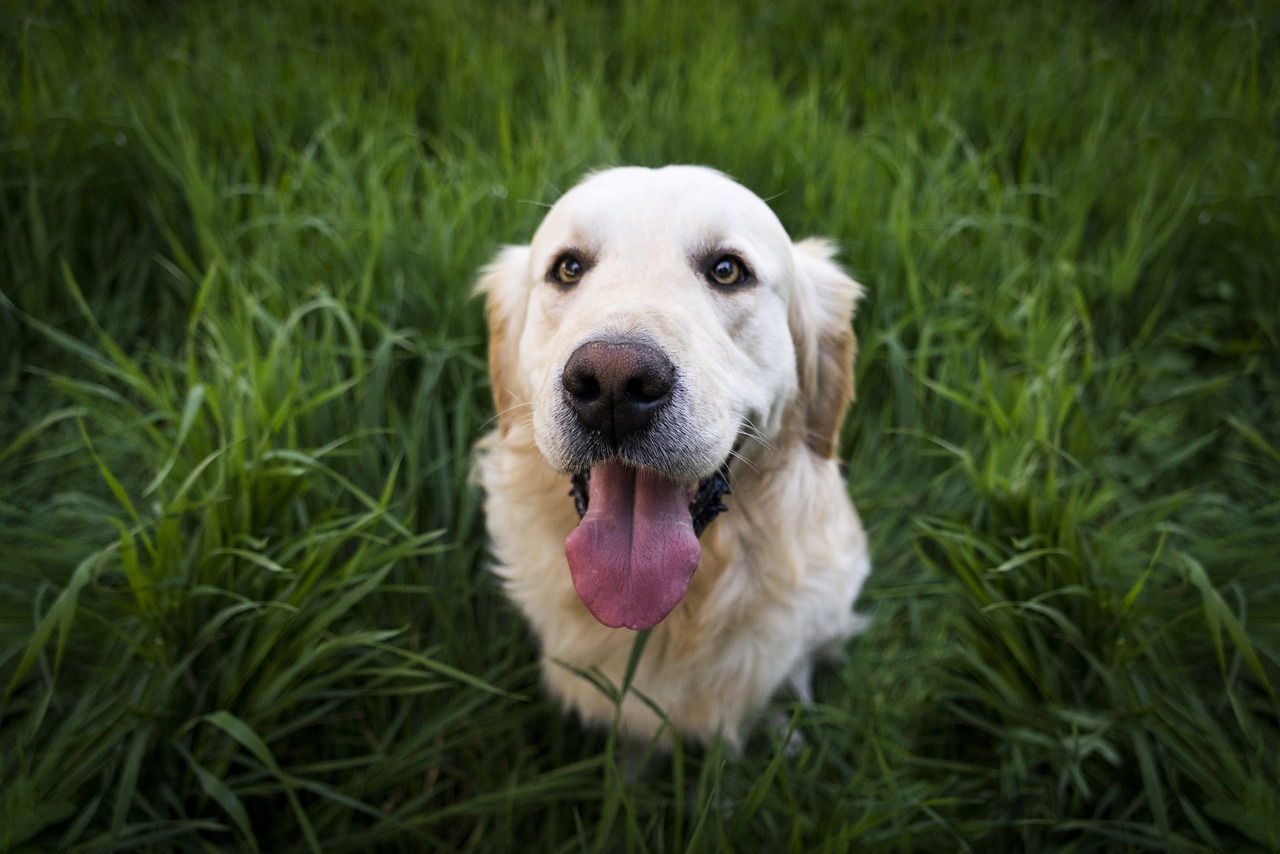
Professional Grooming Services
While grooming your short-haired dog at home can be a rewarding experience, there are times when seeking becomes essential. Just like humans sometimes need a trip to the salon, our furry friends can benefit from the expertise of trained professionals. These experts not only have the right tools but also possess the knowledge and experience to handle various grooming challenges that might arise.
One of the primary reasons to consider professional grooming is the health and hygiene of your dog. Groomers are skilled in identifying skin issues, parasites, or any abnormalities that may require veterinary attention. They can also provide services such as deep cleaning, which is often more thorough than what can be achieved at home. For instance, they have access to specialized shampoos and conditioners that cater to specific coat types and skin sensitivities, ensuring your dog’s coat remains vibrant and healthy.
Another significant advantage of professional grooming is the time-saving factor. Let’s face it, grooming can be a lengthy process, especially if your dog is not particularly cooperative. A groomer can typically complete the job in a fraction of the time it would take you. Plus, they are trained to handle anxious or wriggly pets, making the experience smoother for both the dog and the owner.
It's also worth noting that professional groomers often offer additional services beyond basic grooming. This can include:
- De-shedding treatments
- Ear cleaning and nail trimming
- Anal gland expression
- Specialized skin treatments
However, it’s essential to find a reputable grooming salon. Look for places that have good reviews, are clean, and have staff who are knowledgeable and friendly. Don’t hesitate to ask questions about their grooming techniques and the products they use. You can also request a tour of the facility to ensure it meets your standards of cleanliness and safety.
In summary, while home grooming is a valuable skill, professional grooming services can enhance your short-haired dog's grooming routine. They provide not just a service but a wealth of knowledge that can contribute to your pet's overall health and happiness. So, the next time you’re considering a grooming session, think about how much easier—and often more effective—it can be to leave it to the pros!
Here are some common questions pet owners have regarding professional grooming services:
| Question | Answer |
|---|---|
| How often should I take my short-haired dog to a groomer? | Typically, every 6 to 8 weeks is a good rule of thumb, but it can vary based on your dog's activity level and coat condition. |
| What should I look for in a grooming facility? | Cleanliness, professional staff, good reviews, and a welcoming atmosphere are key factors to consider. |
| Are grooming services expensive? | Prices can vary widely based on location and services offered, but many salons offer packages that can be more economical. |
| Can I stay with my dog during grooming? | Many groomers allow it, but some may prefer you to leave to reduce distractions for your pet. |
Frequently Asked Questions
- What are the unique grooming needs of short-haired dog breeds?
Short-haired dogs may seem low-maintenance, but they have specific grooming requirements. Different breeds can have varying coat textures and skin sensitivities, which means that recognizing these differences is key. For instance, some breeds might require more frequent brushing to remove loose hair, while others may need special attention to their skin to prevent irritations.
- What essential grooming tools should I have for my short-haired dog?
To keep your short-haired dog looking sharp, you’ll want to invest in a few essential grooming tools. A good quality brush designed for short coats, a bathing shampoo suited for your dog's skin type, and nail clippers are must-haves. Additionally, having ear cleaning solution and a soft cloth for eye care can be invaluable in maintaining your dog's overall health.
- How often should I bathe my short-haired dog?
Bathing frequency can vary based on your dog's lifestyle and coat condition. Generally, short-haired dogs can be bathed every 4 to 6 weeks. However, if your dog loves to roll in the mud or gets particularly dirty, you might need to bathe them more often. Just remember to use a gentle shampoo and ensure thorough rinsing to avoid skin irritation!
- What is the best way to brush and de-shed my short-haired dog?
Brushing your short-haired dog should ideally be done once a week, but during shedding seasons, you might want to increase that frequency. Use a rubber curry brush or a bristle brush to remove loose hair effectively. This not only keeps their coat healthy but also reduces shedding around your home. Plus, it’s a great way to bond with your furry friend!
- How can I take care of my short-haired dog's skin?
Skin care for short-haired dogs involves regular checks for any irritations or unusual spots. Keep an eye out for signs of dryness or redness. Using a moisturizing spray specifically designed for dogs can help maintain skin hydration. If you notice persistent issues, consulting your vet is always a wise choice to rule out allergies or infections.
- What are the best practices for cleaning my dog's ears and eyes?
Cleaning your dog’s ears and eyes should be part of your regular grooming routine. For ears, use a vet-recommended cleaning solution and a cotton ball to gently wipe the outer ear. For eyes, a damp cloth can help remove any discharge. Always be gentle and watch for signs of discomfort; if your dog seems sensitive, consult a vet.
- How often should I trim my short-haired dog's nails?
Nail trimming is crucial for your dog's health and comfort. Ideally, you should trim your dog’s nails every 3 to 4 weeks. If you hear their nails clicking on the floor, it’s time for a trim! Regular nail care prevents discomfort and potential injuries, so don’t skip this important step.
- When should I consider professional grooming services?
While many grooming tasks can be done at home, there are times when professional help is beneficial. If your dog has a specific grooming issue, such as matting, or if you’re unsure about nail trimming, a professional groomer can provide expertise. Additionally, they can help with tasks that are tricky or time-consuming, ensuring your pup looks their best!

